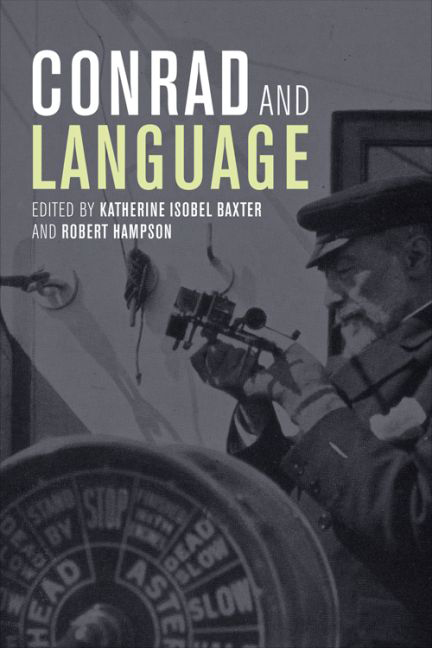Book contents
- Frontmatter
- Contents
- A Note on Texts
- Introduction
- 1 Conrad and Nautical Language: Flying Moors and Crimson Barometers
- 2 Navigating the ‘Terroristic Wilderness’: Conrad's Language of Terror
- 3 Conrad, G. E. Moore and Idealism
- 4 Conrad's Language of Passivity: Unmoving towards Late Modernism
- 5 The Powers of Speech in Conrad's Fiction
- 6 ‘Soundless as Shadows’: Language and Disability in the Political Novels
- 7 Conrad and Romanised Print Form: From Tuan Almayer to ‘Prince Roman’
- 8 Languages in Conrad's Malay Fiction
- 9 Gallicisms: The Secret Agent in Conrad's Prose
- 10 ‘The speech of my secret choice’: Language and Authorial Identity in A Personal Record
- 11 The Russian Redemption of The Secret Agent and Under Western Eyes
- Afterword
- Contributors
- Index
10 - ‘The speech of my secret choice’: Language and Authorial Identity in A Personal Record
Published online by Cambridge University Press: 12 September 2017
- Frontmatter
- Contents
- A Note on Texts
- Introduction
- 1 Conrad and Nautical Language: Flying Moors and Crimson Barometers
- 2 Navigating the ‘Terroristic Wilderness’: Conrad's Language of Terror
- 3 Conrad, G. E. Moore and Idealism
- 4 Conrad's Language of Passivity: Unmoving towards Late Modernism
- 5 The Powers of Speech in Conrad's Fiction
- 6 ‘Soundless as Shadows’: Language and Disability in the Political Novels
- 7 Conrad and Romanised Print Form: From Tuan Almayer to ‘Prince Roman’
- 8 Languages in Conrad's Malay Fiction
- 9 Gallicisms: The Secret Agent in Conrad's Prose
- 10 ‘The speech of my secret choice’: Language and Authorial Identity in A Personal Record
- 11 The Russian Redemption of The Secret Agent and Under Western Eyes
- Afterword
- Contributors
- Index
Summary
A Personal Record is Conrad's only major work of autobiography. It was serialised under the title Some Reminiscences in the English Review, a new literary periodical founded by Conrad's friend and occasional collaborator Ford Madox Ford, between December 1908 and June 1909. The subsequent book edition appeared in January 1912, and soon went into a second printing, in early March. A second English edition followed in 1916, and a third edition in 1919, anticipating the collected English and American editions of 1921, and underlining the gathering interest in Conrad, from both publishers and the reading public, either side of his popular breakthrough with Chance. Conrad had planned further instalments of his ‘Reminiscences’ – ‘under the general title Some Portraits’ – and revisited the topic again in early 1922, two years before his death in 1924 (CL5 21). However, these further volumes were never realised. The only additions Conrad would make to this slim autobiographical corpus were his two introductions to A Personal Record: ‘A Familiar Preface’ (1912), for the first English edition published by Eveleigh Nash, and his ‘Author's Note’ (1919) for the third English edition, published by J. M. Dent. Although The Mirror of the Sea (1906), an early collection of autobiographical essays, marks his first attempt at the form, and the late essay ‘Poland Revisited’ (1915) a continuation, A Personal Record would remain the single planned, public account of his life. A Personal Record is also significant as a sustained reflection, across its serialised parts, book editions and prefaces, on the circumstances surrounding Conrad's entry into public life in the first place: namely, his decision to become a writer, and in particular, a writer in his third language, English.
Geographical expressions and the adoption of English
Conrad saw himself as having three lives and identities. Accordingly, A Personal Record encompasses his upbringing in Polish Ukraine, his early sea years in the south of France and the Mediterranean, and his subsequent apprenticeship as a writer in Britain.
- Type
- Chapter
- Information
- Conrad and Language , pp. 168 - 185Publisher: Edinburgh University PressPrint publication year: 2016

